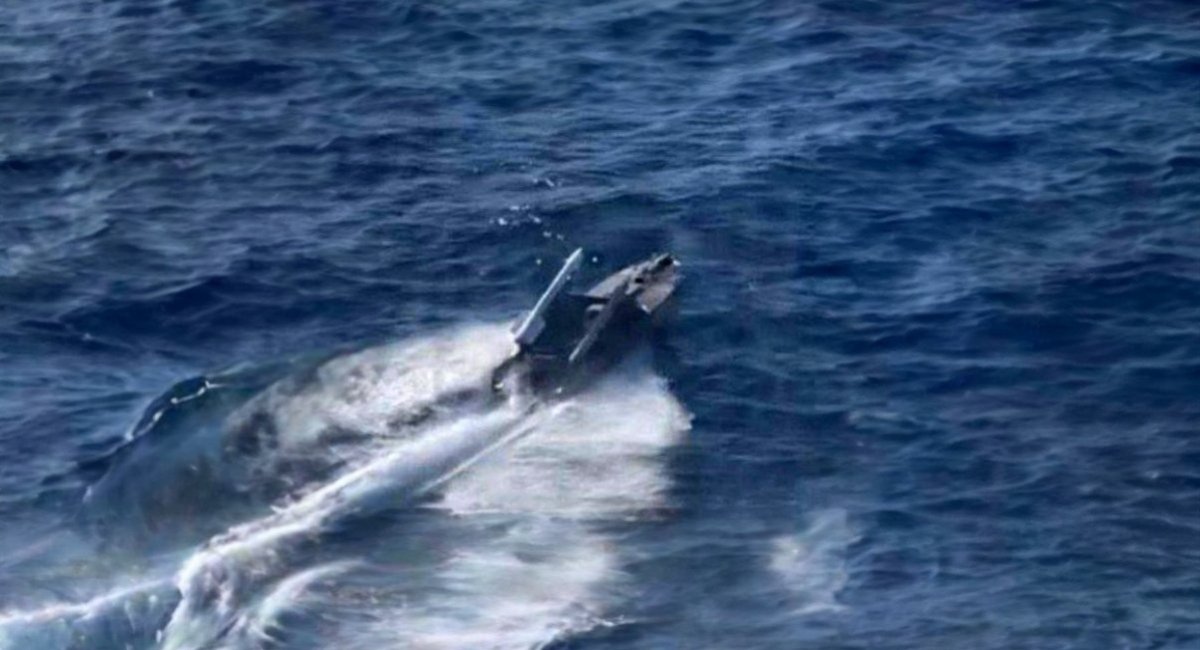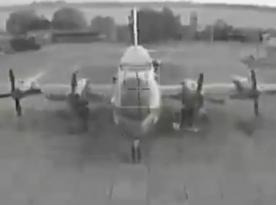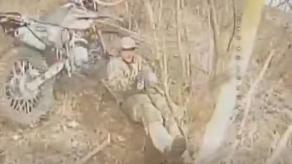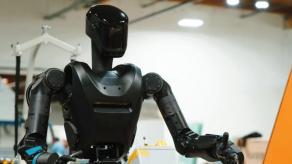Yesterday, May 6th, a video published by russian invasion forces operating in Ukraine revealed a new modification to the Ukrainian Magura V5 naval drone, this one was equipped with a simplistic launcher for R-73 air-to-air missile. Now there is a photo disclosing more details about the design of this vessel-based missile system.
A photo of unidentified origin circulating in Ukraine's media shows the stern of a damaged Magura V5 ashore, its nose facing the sea. Sources say it was destroyed by the russians. As we can see, the design of the missile rail is quite simple: a standard aircraft rail launcher was stripped off the hardpoint and stationary fixed to the drone's body pointing slightly upward. The target acquisition is provided by a camera on a stabilized gimbal with a thermal imaging channel.
Read more: The Long-Awaited Solution: Ukrainian Magura V5 Drone Equipped with R-73 Anti-Aircraft Missiles

Things like the power supply system feeding the rail launcher and the missiles, pre-launch missile preparations, or target lock indicator, etc. remain behind the scenes. Still, the visible components tell that the R-73 was integrated with this naval platform in a very pragmatic way.
For one, despite a more logical way would seem to equip the drone with a more compact weapon, like APKWS guided rockets, those need the laser beam pointing at the target all the while the rocket is approaching it, which is difficult due to the waves and rocking motions in the open sea. Effective operation would require a powerful (read: expensive) stabilizer for the laser pointer, adapted for the aggressive marine environment.
The R-73 missile, on the other hand, has an MK-80 active infrared homing head with an angle of view 75°, target designation angle 45°, and target lock range of 8–12 kilometers. Besides, there is a Ukrainian-developed modernized MK-2200 homing head with all these parameters increased and even electronic warfare resistance. In terms of target engagement potential, the R-73 has better usability.

R-73 also has no value as a trophy, if it ends up in the hands of the russian military. Unlike, for example, the Brimstone – another weapon option we considered viable for an anti-aircraft missile to install on a naval drone.
Lastly, one more alternative was to affix a man-portable missile onto the unmanned boat. The problem, however, is that a Stinger, for instance, with its 2.3-kg warhead cannot guarantee a kill on an airborne target, whilst the 8-kg warhead on R-73 is more lethal and has a better chance to take it down. Moreover, the R-73 missile's homing head might prove more sensitive than the one planted inside a portable missile, nest increasing their chances of locking on the target at larger distances.
As for the operational range, R-73 should also be superior with an estimated 8 to 12 km against an average of 5 km for a MANPADS. In reality, though, everything depends on the homing head's ability to lock on the target. The only apparent drawback R-73 has is the dead zone of 300 meters around it, which is the minimum range required for a successful hit. In the case of a launch from a drone, the minimum operational range is even larger due to the blind spot directly above the launcher because the latter is fixed firmly to the platform.
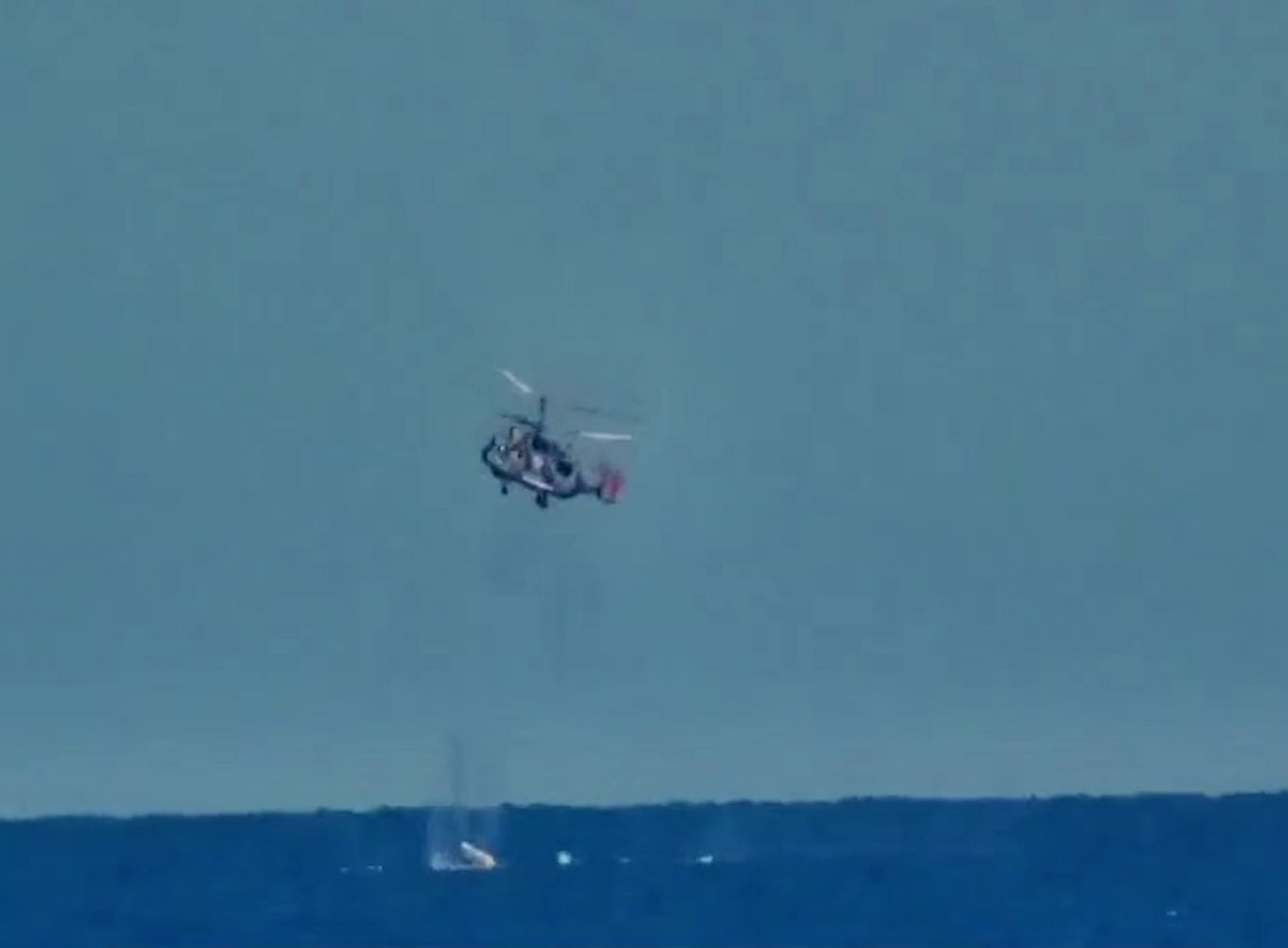
Overall, surely, the Ukrainian engineers could have come up with solutions to overcome all the challenging parts pertaining to both R-73 missiles and its alternatives. Say, make a rotating launcher but that would drastically increase the weight and necessitate additional sensitive parts, easy to fail in the rough environment. Or install a small radar to surveil the surroundings but that would require a stronger power source, bulky and making the vessel more conspicuous.
The design solutions and the weapon Ukrainians chose here made the drone-based anti-aircraft system as simple as possible yet potentially very effective if used for an ambush attack. And the chances are high that this episode featured in the russian video is not the first one.
If we assume the Ukrainian forces have been utilizing it for a while, some of the earlier losses in russian naval aircraft can be explained. Such as the late March 2024 destruction of a fighter jet when it had just taken off from an airfield in the russian-occupied city of Sevastopol, Crimea.
Read more: Ukraine Wants to Turn Suicide Sea Drones Into Air Defense Platforms: Which Weapons Would Fit




